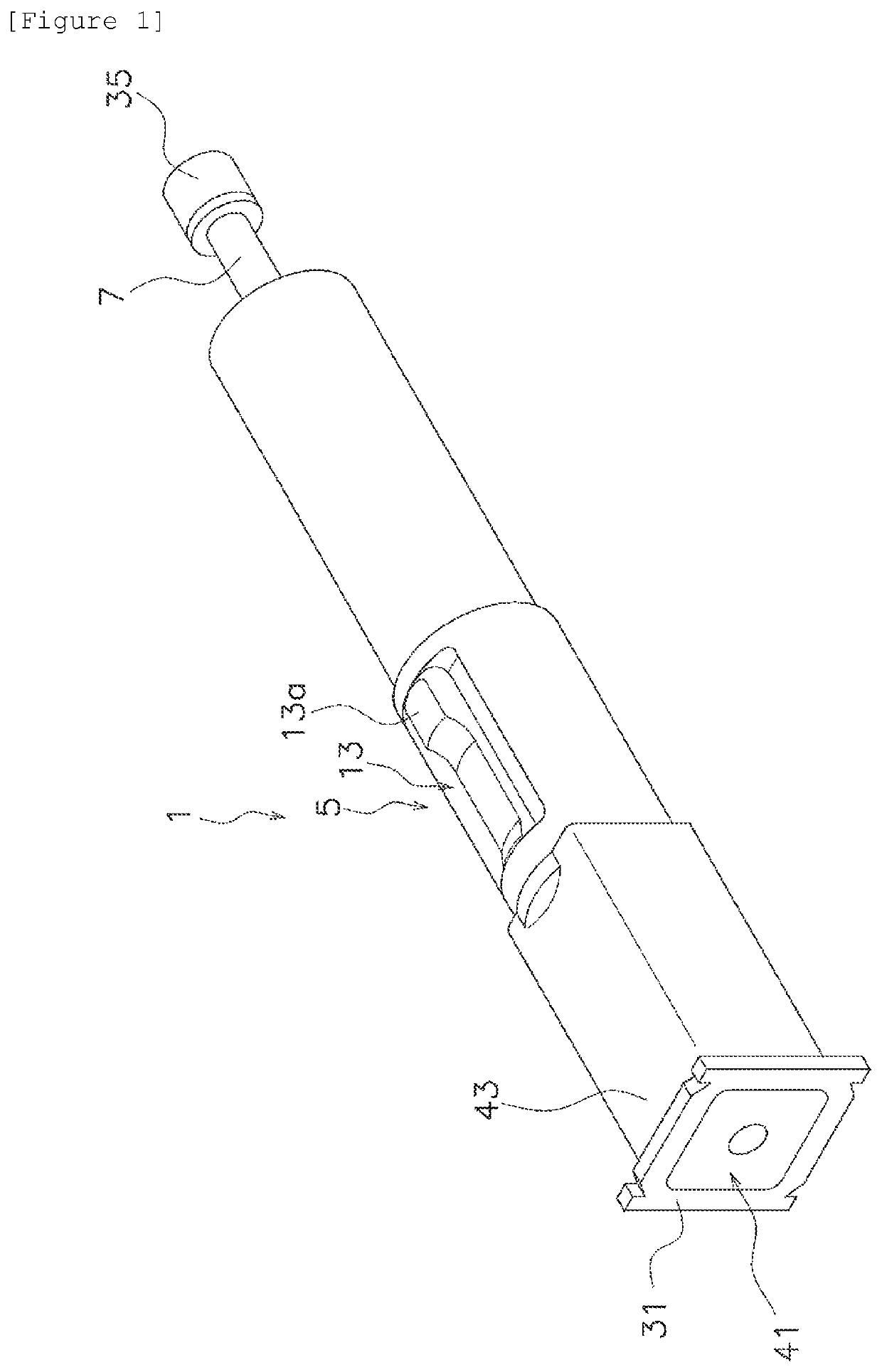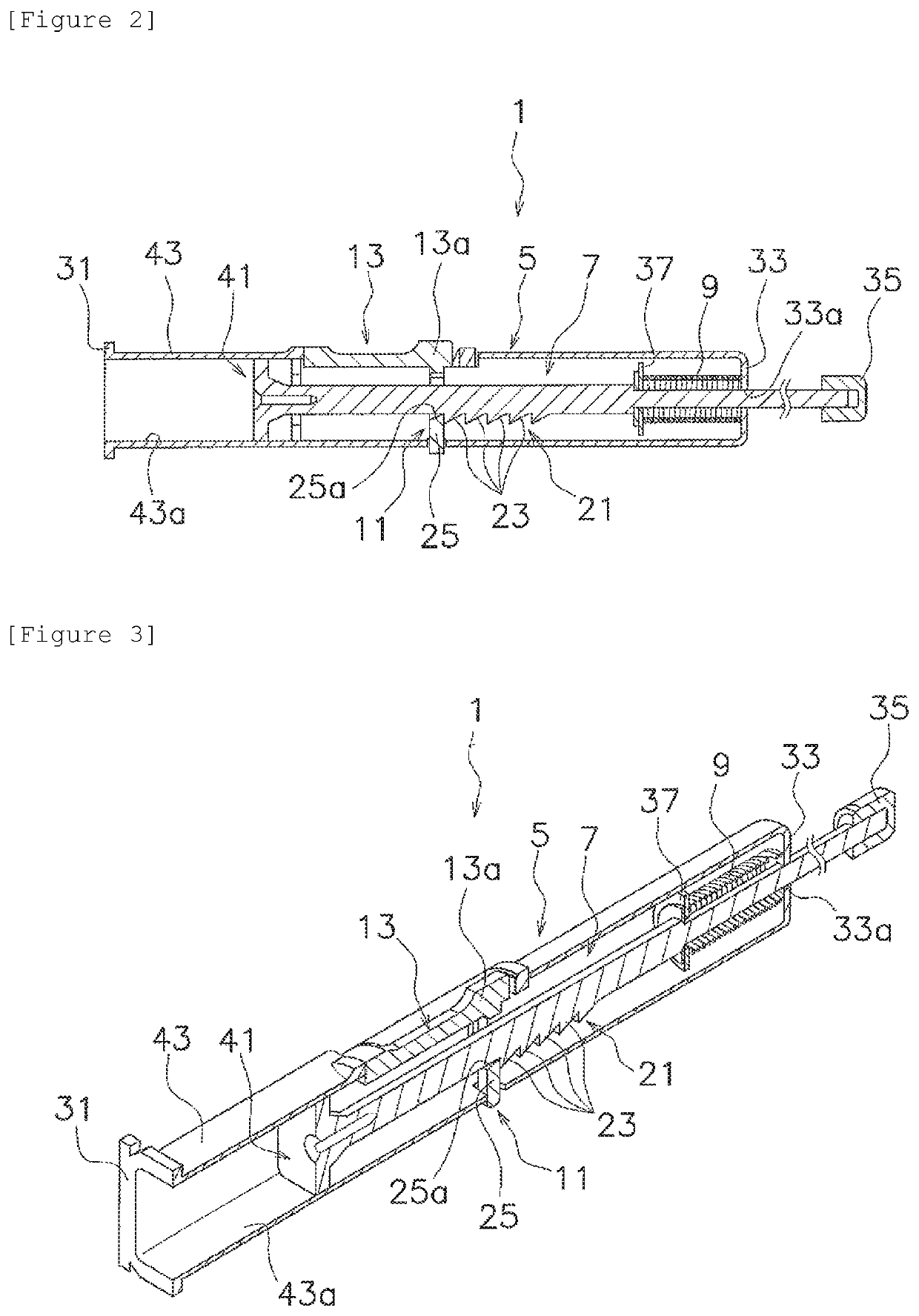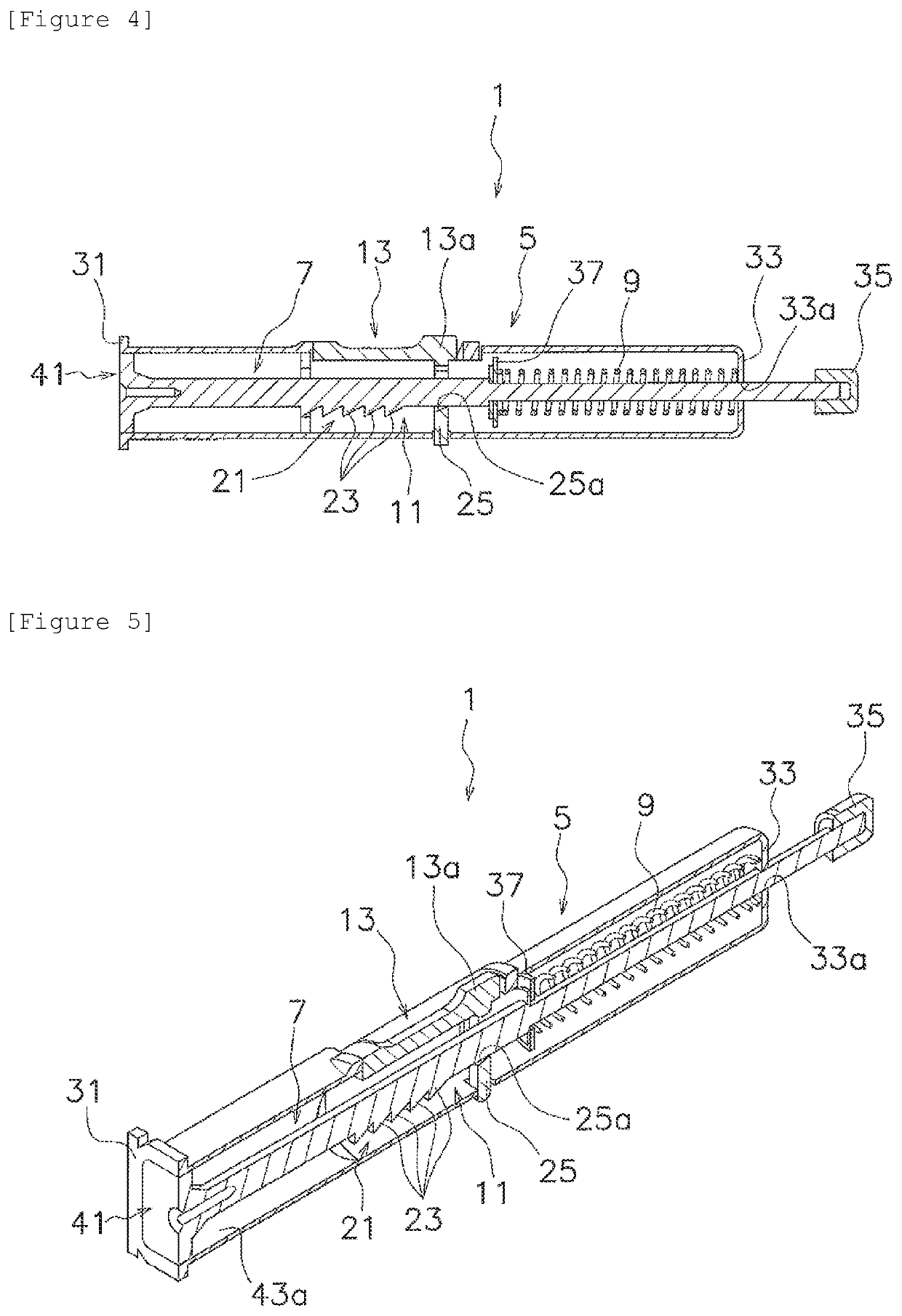Impacting type applicator for microneedle patch and leading end member
a technology of leading end member and applicator, which is applied in the direction of microneedles, infusion needles, other medical devices, etc., can solve the problems of difficult stably administering medicine into dermis, difficult to consistently produce appropriate load, etc., and achieve stable medicine administration and improved workability of the device that inserts a microneedle into the skin.
- Summary
- Abstract
- Description
- Claims
- Application Information
AI Technical Summary
Benefits of technology
Problems solved by technology
Method used
Image
Examples
first embodiment
1. First Embodiment
[0059](1) Overview of Configuration of Applicator
[0060]An impacting type applicator 1 for a microneedle patch (hereinafter referred to as “applicator 1”) according to an embodiment of the present invention will be described with reference to FIGS. 1 to 5. FIG. 1 is a perspective view of the impacting type applicator for a microneedle patch according to a first embodiment of the present invention. FIGS. 2 and 4 are cross-sectional views of the applicator. FIGS. 3 and 5 are perspective cross-sectional views of the applicator.
[0061]The applicator 1 is a device designed to press a microneedle patch 3 (FIGS. 6 and 7) against a skin to insert a microneedle into a dermis. More specifically, the applicator 1 can produce a biasing force high enough to pierce the microneedle patch 3 into the skin.
[0062]As shown in FIGS. 6 and 7, the microneedle patch 3 has a substrate 3a and a large number of microneedles 3b formed on one surface of the substrate 3a. The microneedles 3b are...
second embodiment
2. Second Embodiment
[0102]An applicator 101 according to a second embodiment will be described with reference to FIGS. 8 to 10. FIG. 8 is a perspective view of a leading end part of the impacting type applicator for a microneedle patch according to the second embodiment of the present invention. FIG. 9 is a cross-sectional view of the leading end part of the applicator. FIG. 10 is a cross-sectional view of the leading end part of the applicator.
[0103]The applicator 101 is a device that applies a microneedle patch 103 to the skin and has basically the same structure as the applicator according to the first embodiment.
[0104]The applicator 101 has a leading end member 102, which is attached to a leading end of a main body 105.
[0105]The leading end member 102 has a frame-shaped main body 104.
[0106]The leading end member 102 has a contact part 106. The contact part 106 is a part that is provided on the frame-shaped main body 104 and is intended to come into contact with the skin. More sp...
third embodiment
3. Third Embodiment
[0115]An applicator 101A according to a third embodiment will be described with reference to FIGS. 11 to 13. FIG. 11 is a perspective view of a leading end part of the impacting type applicator for a microneedle patch according to the third embodiment of the present invention. FIG. 12 is a cross-sectional view of the leading end part of the applicator. FIG. 13 is a cross-sectional view of the leading end part of the applicator.
[0116]The applicator 101A is a device that applies a microneedle patch 103A to the skin, which has the same basic structure as the applicator according to the second embodiment.
[0117]The applicator 101A has a leading end member 102A, which is attached to a leading end of a main body 105A.
[0118]The leading end member 102A has a frame-shaped main body 104A.
[0119]The leading end member 102A has a contact part 106A. The contact part 106A is a part that is provided on the frame-shaped main body 104A and is intended to be contacted with the skin. ...
PUM
 Login to view more
Login to view more Abstract
Description
Claims
Application Information
 Login to view more
Login to view more - R&D Engineer
- R&D Manager
- IP Professional
- Industry Leading Data Capabilities
- Powerful AI technology
- Patent DNA Extraction
Browse by: Latest US Patents, China's latest patents, Technical Efficacy Thesaurus, Application Domain, Technology Topic.
© 2024 PatSnap. All rights reserved.Legal|Privacy policy|Modern Slavery Act Transparency Statement|Sitemap



